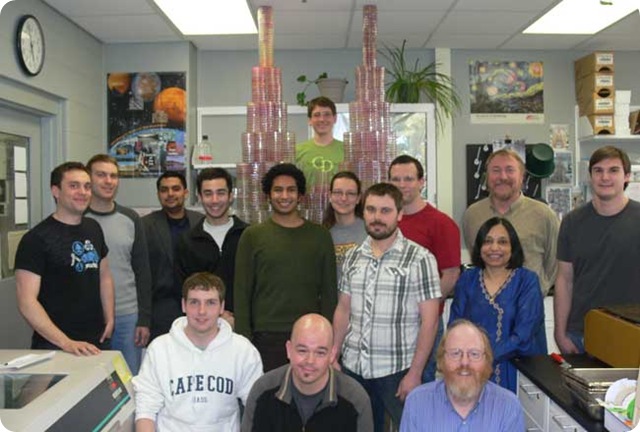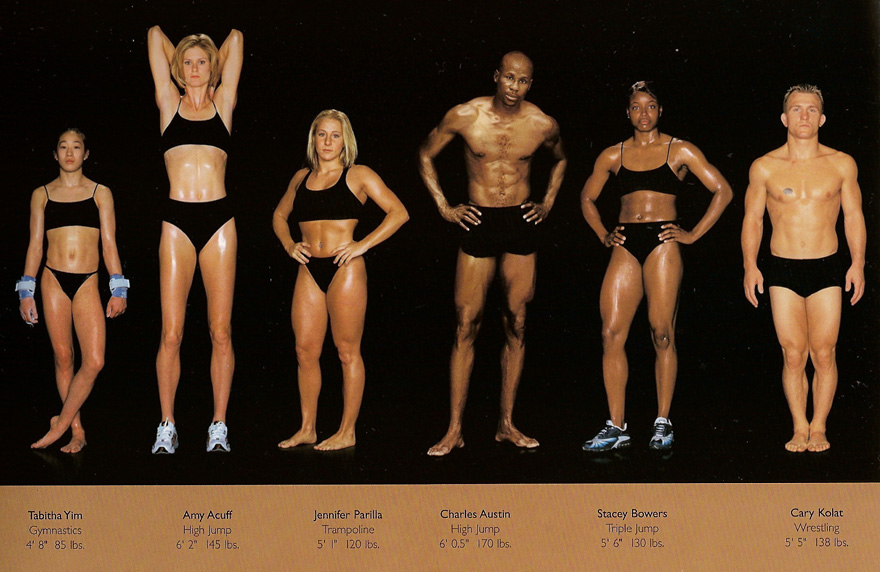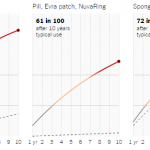
Heck yeah I am! Here are some quick highlights from my first day at the AAAS Annual Meeting:

Fifty Years of the Pill: Risk Reduction and Discovery of Benefits Beyond Contraception
How could I skip this session given the topic’s recent prominence? According to the panelists, the non-contraceptive side effects of the pill are varied. It is prescribed to women with certain risk factors for ovarian cancer, because it lowers their chance of incidence. It’s also used as treatment for Polycystic Ovary Syndrome and an assortment of other endocrine disorders or diseases that are exacerbated by certain hormone balances.
The panelists also went over some big studies on the Pill and risk of stroke or other cardiovascular problems. It sounded like hormonal contraception does raise the risk of these events (especially if you smoke) but the magnitude of the change was small enough to be inconsequential. Think getting an x-ray every few years when the dentist checks in on your wisdom teeth.
This should sound familiar if you remember my last post on contraception and statistics. Going from one case for every 100,000 women to two is a 100% increase, but we don’t really care. The risk for some of the ailments the researchers were looking at were so small that they had to do case-control studies just to find enough affected women to give their analyses some oomph.
Case-control studies aren’t as ideal as randomized treatment (which is seldom possible with a well-established medicine) and they’re also seen as a little worse than cohort studies (where you don’t assign people to different treatments, you just see which they choose for themselves and then track them over time). In a case-control study, you recruit people with whatever disease you’re studying and an appropriate number of unaffected people and see what proportion of each group were exposed to whatever treatment you’re looking at (in this case, the Pill). It’s a little less reliable than the other two, but if the disease you’re studying is really really rare, you’re stuck with this methodology. You can’t assume anyone in your randomized treatment groups or cohort will contract the disease otherwise.
Though after all that fun, one of the panelists still talked about the Pill dropping the risk of ovarian cancer for some subset of women by 50% and didn’t talk about the baseline at all. I really need to become a statistics superhero when I grow up.

Global Science and Public Good in the 19th Century: Meteorology, Tidalogy, and Magnetism
This was a cool lecture by Laura Snyder, author of The Philosophical Breakfast Club. She was talking about the first ‘big science’ project — when William Whewell coordinated scientists and governments around the world to get accurate, synced-up measurements of the tides. Prior to this effort, information on the tides was possessed only by harbor masters, who charged ships’ captains for the data. Because the measurements and projections were decentralized, scientists couldn’t make use of it until Whewell’s big trawl.
After his analysis, the British Admirality began publishing tide tables of its own. I asked the presenter if the harbor masters tried to prevent the government from undercutting their niche, but she said not to her knowledge.

Analogy in Applications of Mathematics and Statistics to Other Disciplines
The next time anyone says you can’t trust the theory of evolution because it can’t be tested experimentally, point them toward Richard Lenski’s 20+ year experiment with E. coli. He’s been tracking mutations and adaptation in bacteria for well over 20,000 generations. And he can freeze colonies every few thousand iterations so he can go back and reexamine the lineage or just take them out of storage and see if they progress the same way as their children. Definitely one of the best science talks I’ve ever seen.

Also, there were two papers on data visualization at this panel! One of which was heavily focused on topology. My cup runneth over.















